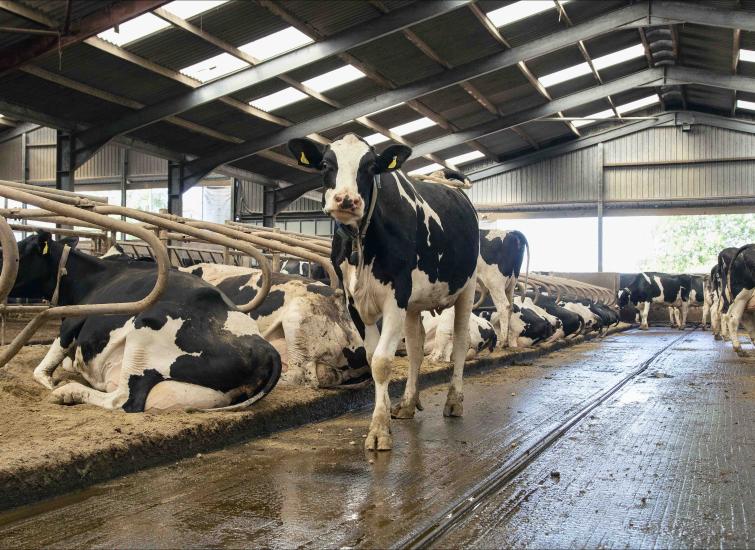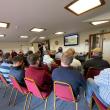Highlighting Mobility Issues
Rosie Miller-Hawkes and Liz Newman touch on some interesting points about mobility following their trip to Poland on the Zinpro First Step course

Lameness in the UK dairy industry is one of the most economically important diseases we need to combat, not to mention the benefits on welfare when we look to prevent it. In the UK its estimated that 45% of cows will have an incidence of lameness each year and with a cost of more than £200 per case, this is of significant financial impact. It’s not just a welfare issue, lameness also impacts fertility, the transition period, general cow health and ultimately milk production – affecting your bottom line.
“Treatment of cow hoof problems is a significant cost to the dairy, lameness also leads to reduced milk yield, reduced fertility and an increased risk of culling which can result in considerable economic costs. To put this in perspective, according to Wiltshire et al. (2009) fertility costs account for 39 percent of the total annual cost of lameness within a dairy herd , while milk yield and culling each account for 24 percent and medicine accounts for only 10 %.” Dr Daryl Kleinschmit, Zinpro Coporation
Advanced Nutrition have recognised this industry wide problem and, along with their own experienced in-house team, together with leading industry experts have created Advanced Mobility. A program, bespoke to every farm they work with, designed to create a long-term path to lameness prevention. A crucial part of this program is to work together with the farm team to help address marginally lame cows before they become lame.
The team are constantly learning and updating their knowledge in this area and recently Liz Newman and Rosie Miller-Hawkes attended a training course in Poland put on by our partners, Zinpro.
Jonathan Huxtable Zinpro Corporation comments, “Dairy producers are continually battling lameness in their operations. Lameness is a complex issue and prevention requires a comprehensive program”.
Here's their top tips and highlights from the course…
1. The Importance of Routine Trimming
Routine trimming shapes the foot to teach the cow how to walk properly, reducing the chances of cows going lame, improving mobility, welfare, yield and fertility. However, the key is the ability to identify cows before they become lame. Scoring cows locomotion using the Zinpro 5 point scale and presenting these to the foot trimmer can rectify foot shape before damage occurs. Prevention is always better than cure.
Advanced Mobility work together with Ark Vets and David Rowe from the Dairyland Hoof Institute UK in Scotland to provide courses for Farm Managers and staff to learn about foot trimming as a preventative method to lameness.
2. Does lameness cause inflammation or does inflammation cause lameness?
An interesting question raised on the course was “does lameness cause inflammation, or does inflammation cause lameness?” and therefore can we reduce the risk of lameness with efforts to reduce inflammation?
For example, we know that leaky gut causes an immune response in cows, which in turn causes inflammation. By improving the integrity of the gut through correct mineral balance, we can help to reduce the risk of leaky gut, and therefore reducing the immune response and resulting inflammation.
On the farms that we work with, the team have seen the data to prove that by targeting a reduction in leaky gut with our specific nutritional approach, we see a reduction in lameness.
3. What is the difference between a lame cow and a mastitic cow?
Dr. Huw McConochie, Research Nutritionist at Zinpro, discussed the difference between a lame cow and a cow with mastitis in terms of economic impact on the business as mastitis is widely believed to have the bigger impact.
Both lameness and mastitis:-
- Reduce feed efficiency
- Compromise reproductive performance
- Lower production
- Higher risk of herd removal
However, the milk from a mastitis cow is unsaleable, and so the economic impact is visible in the milk cheque. With lameness, the economic impact is less obvious, but can significantly affect milk yield, fertility and welfare.
Rosie comments, “Whilst economic impact is less obvious, neither farmers or nutritionists want to see a lame cow, so we are continually striving to work together to understand the reasons as to cows are becoming lame. A key factor in our Advanced Mobility program is working together as team from the farmer to the vet, the nutritionist and foot trimmer.”
Mobility scoring cows can help to set a benchmark for your herd from which to improve and can be used as a tool for identifying cows before they go lame, getting ahead of the negative impacts of impaired mobility. From there, we can use Zinpro’s FirstStep® program to assess various aspects of housing, management, and nutrition to identify areas to focus on for improvement.
These are just a few of the things we look at as part of our Advanced Mobility program which is bespoke to all of the farms we work with. We recognise that every farm is different and if you’d like to find out more information on mobility and lameness prevention then please get in touch. We’d be happy to come and chat to you on your farm.
〈 BACK














